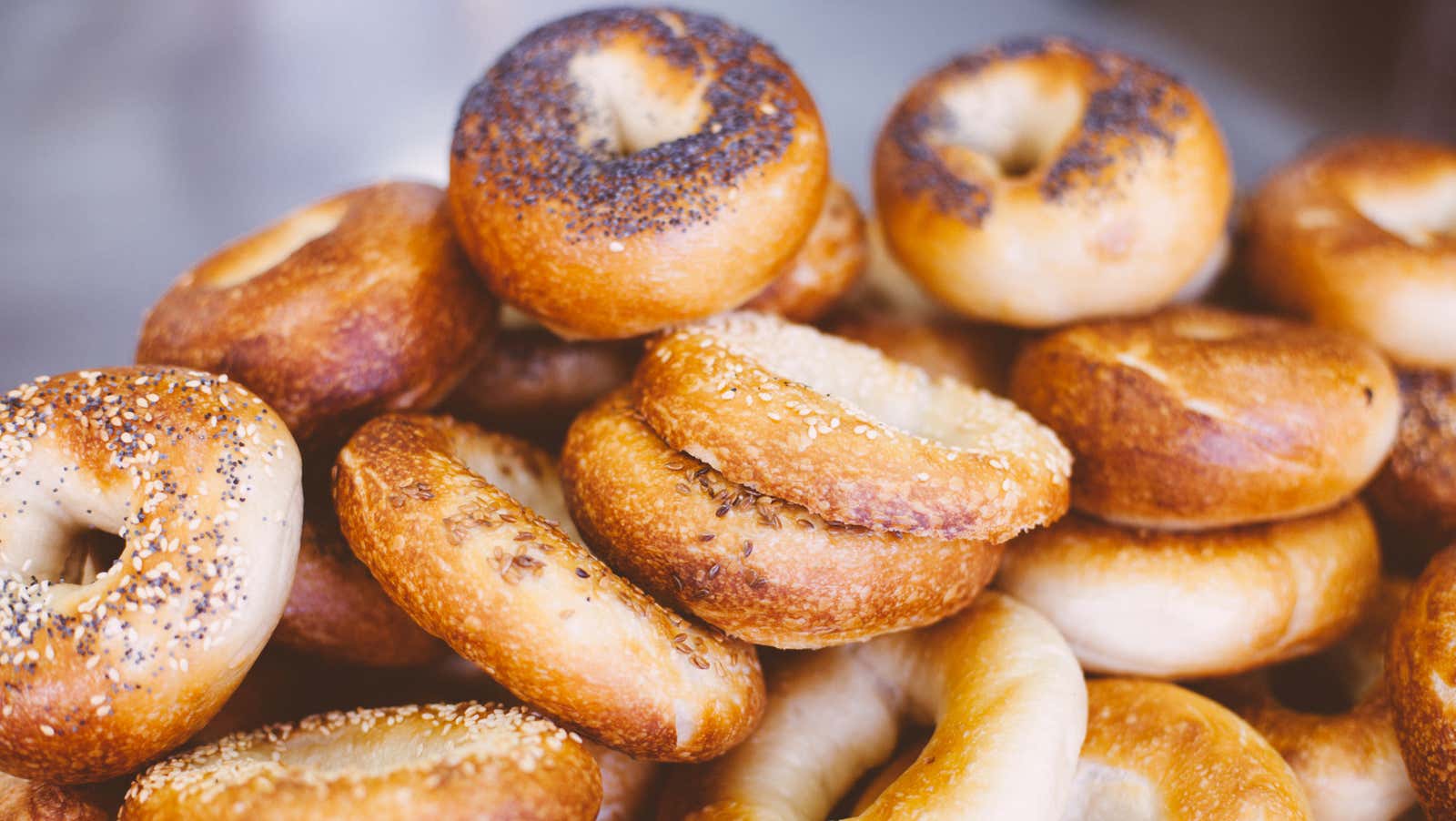How to Find a Good Bagel Recipe

Of all the baked goods you can make at home, bagels can be the most intimidating. They really shouldn’t be. The dough is easy to handle and very difficult to spoil; with the right recipe, even your first try will be 10 times better than anything you can get outside of a regular bagel shop.
This recipe is the hardest to find. I’m here to help. I used to professionally make bagels with a recipe I developed and almost ten years later I still use them at home. (I haven’t posted this yet.) But you don’t need to be a retired pro to throw great bagels in your own kitchen — you just need to know what works and what doesn’t. Here are my top tips for determining if your recipe is worth the time.
Start with a list of ingredients
Beyond the obvious (bread flour, water, salt, yeast), you’ll need a recipe that requires a thick liquid sweetener. Traditionally, New York-style bagels use barley malt syrup, and Montreal-style bagels use honey. I’ve used both and prefer molasses because it’s cheap, basic and works great.
Then determine the percentage of moisture . It should be about 50%, which is much less than other types of bread. The result is a dense, strong dough that can withstand boiling water and becomes very chewy in the oven. Slightly higher hydration is fine, but once you hit 60% it turns into pizza dough.
Next, look at the directions
This is where things get hairy. Making bagels is not technically difficult, but getting it right takes time. Many recipes try to work around time constraints by choosing labels that are always detrimental to the finished product. Treat them like red flags – if you see them, move on:
- No Chilling: If the recipe does not require chilling shaped bagels overnight, this is trash. A long, slow rise at low temperatures fully develops gluten, fixes its shape, adds a bit of an unusual flavor and produces the characteristic bubbles on the crust during fermentation. I cannot overemphasize the importance of this step.
- Baking soda in a water bath: Baking soda is a weak substitute for lye, or pretzels. Bagels are not, as you know, pretzels; they get their shiny crispy crust from slow fermentation, boiling water, and a screaming hot oven – not alkali, let alone baking soda.
- Too much boil: The longer you boil the bagel, the thicker and shorter the crust becomes. I’ve seen recipes take 2 minutes per side, which makes me physically and emotionally upset. Do you want sad, flat, stiff washers? I didn’t think so. A quick dunk – only 20 to 30 seconds – is enough.
Taking all of these criteria into account rules out the vast majority of bagel recipes, but I can enthusiastically vouch for Becky Crystal and Alex Baldinger’s recipe in The Washington Post. (If you cut the cooking time in half, Peter Reinhart’s recipe works too.) They need time to get it right, and it shows that these recipes are easy to follow and always give great results.